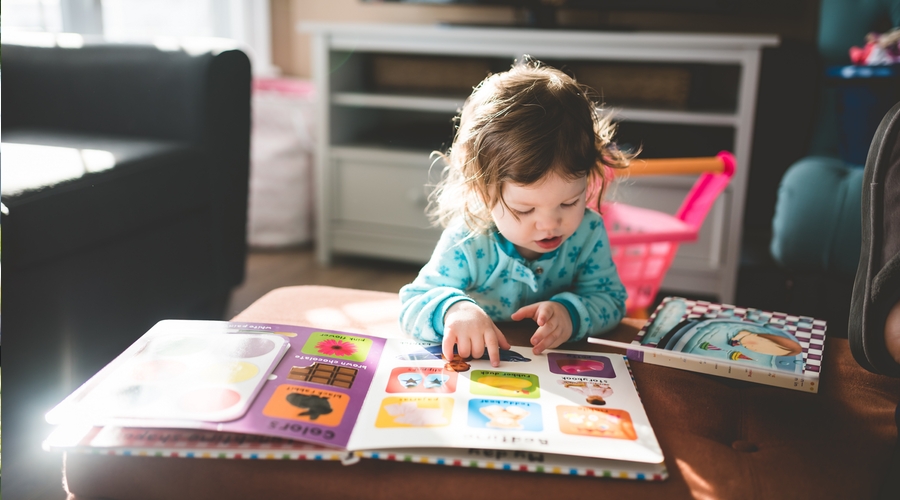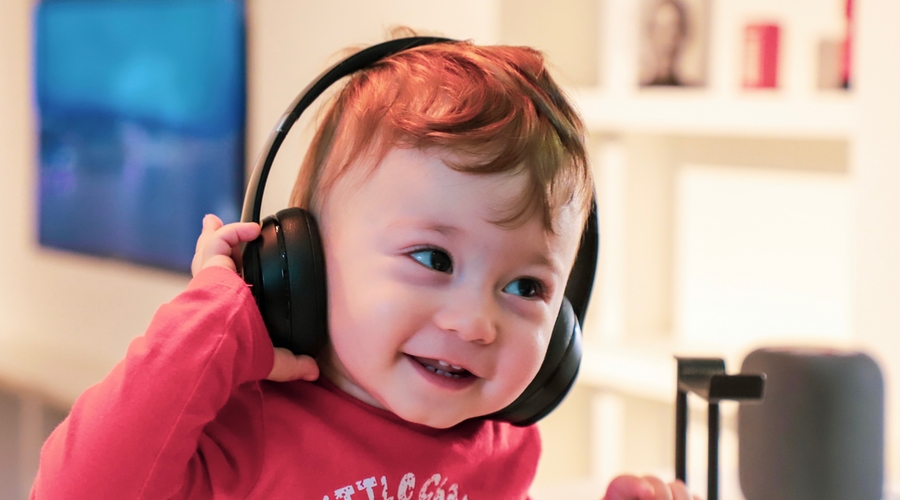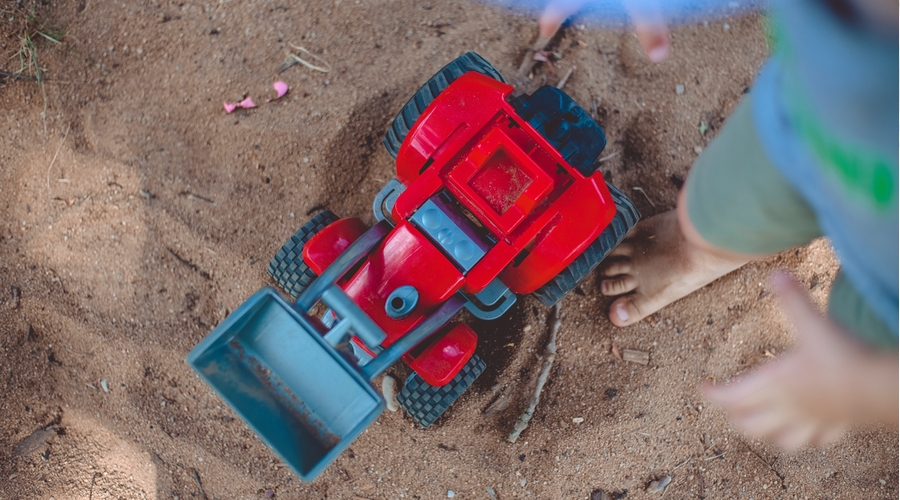settings
children
With Famly since
We are surrounded by vast amounts of research which clearly shows the importance of good early language skills, without which children and young people are at risk of social, emotional, educational and economic disadvantage.
- 40% of seven to 14-year-olds who were referred to child psychiatric services had a language impairment that had never been suspected.
- 50 – 90% of children with persistent Speech, Language and Communication Needs (SLCN) go on to have reading difficulties.
- Only a fifth of children with SLCN reach the expected levels for their age in English and Maths at age 11.
- In some areas, more than 50% of children entering reception have language levels below what is expected for their age.
But while these figures may deal mostly with older children, you should never feel like you cannot help. Because…
How a language-rich environment supports children from the start
Our first article is about the joy of working with the youngest children and the significant opportunities you have to make positive and lasting change for every child who is at risk of falling behind.
Here, we begin with "normal" development and how to make the very best of those crucial early years. Next time, we’ll look in more detail at those children who, despite the very best of efforts on your part, are falling behind. There will be more about what you can do and when to seek specialist help later.

It can be easy to feel daunted by this responsibility, but you don’t have to be.
What we want to tell you is that by understanding how children develop language you are best-placed to maximise what is essentially a normal process. By recognising that opportunities for language development don’t just happen at certain parts of the day. By simply making small changes to what you already do and adding in some new strategies, you will be giving every child the best possible chance.
How children develop communication and language skills
Babies emerge into the world innately programmed to develop language. Right from the beginning they are learning to listen, to discriminate sounds, and to gradually begin to make sense of what they see and hear.
‘Noise’ becomes a babble from which the young child learns, remarkably quickly, to extract the sounds of their mother tongue and to discard those not needed. As their knowledge store grows, words will begin to emerge, quickly followed by the joining of words into two and then three-word phrases.
At the same time, as physical skills develop, children begin to make sense of their environment through the power of exploration and play. Through play, children practise, they rehearse, they mirror what they see in the world. Imagination is developing and language with it. All this time the child is providing a running commentary – initially just for themselves and then later with language that invites the attention and involvement of others to participate and enjoy.

The key components of developing speech and language skills
As therapists, we talk about the three puzzle parts which must come together if a child is to lay solid foundations for the future. They are:
1. Means
Has the child got the skills to communicate? This involves:
- Understanding
- Vocabulary
- A developed speech sound system
- The skills to use language for lots of different things.
In the beginning, language is used for very basic things like labelling and requesting. Gradually language usage becomes more varied (describing, explaining, commenting) and increasingly sophisticated (reasoning, hypothesising, debating).
All of these skills are necessary if a child is to become a skilled communicator. They rely on meaning conveyed by a broad and rich vocabulary of nouns, verbs, adjectives, structures, tenses, and nuances.
2. Reasons
Is language motivating & rewarding? Initially, language gets a child’s needs met. Later on, it grows in sophistication and satisfies social and emotional needs.
3. Opportunities
It’s important to help children make choices, provide them with a variety of play situations, create opportunities to describe and explain, and to begin to develop narrative skills.
How to navigate the EYFS

Crucial to all three of these components is you.
You are the model as a child’s means, either as a means to communicate or a means to develop their language. You are the facilitator, making sure there are reasons for the child to want to communicate. You are the developer, using every opportunity for broadening and enriching language.

A language-rich enabling environment
As therapists, we spend time with our Early Years colleagues looking in detail at every aspect of the environment. This is not only about the physical space you provide but is also about managing the dynamic aspects of that space, such as controlling volume to make sure there are opportunities for developing attention skills or introducing ‘communication rules’. Most importantly, you need to understand the impact adult interaction skills have on child language development – both yours and those of other significant adults.
1. Using your space as a language-rich environment
- The physical environment
- Organisation
- Displays
- Visual support
- Books
- Play
Factoring in both loud and quiet times is ideal. Outdoor play, for example, is a great opportunity to be ‘loud’. Children can let off steam, shout and squeal as much as they want. This might then be contrasted with the calm and order inside, where the space is still fun but it is an environment for a different type of learning. You could even develop a signal, a sound, symbol or both, which children learn to associate with returning to the ‘quiet’ indoors
2. The opportunities you create to support language development
- Adult-facilitated activities
- Small group work
- Interactive book reading
- Structured conversation
‘Communication rules’ are things like turn-taking and learning not to interrupt. The point here is that if everybody is talking, nobody is listening, and without listening, there can be no learning.
As adults, we understand speaker-listener roles - we all understand the idea that ‘You’re talking and I’m listening. When it’s my turn I might talk about what you were saying and then I might contribute some of my own ideas. Then we’ll swap and I’ll be the listener again.’ On an individual level, as children develop conversational skills, they need to learn this too. As with pretty much everything, they learn by example.
As a group, children need to learn that when the adult is talking by explaining what will happen or giving instructions, they are listeners. This is not only to make sure they themselves don’t miss anything but also to ensure that the learning experience for everyone is not disrupted.
3. The ways in which adults in your setting talk with children
- Gaining attention
- Use of visual supports
- Pacing & pausing
- Gestures & intonation
- Offering choices
- Modelling
- Repetition
- Don’t overwhelm with too much talk!
- Controlling volume
Now we come to the most crucial area – this is where the impact can be enormous and it is entirely in your hands. It doesn’t depend on your budget for equipment or modifications to your space – it just depends on you.
Surprisingly, the best way to control the volume is to reduce your own volume. Children will soon learn that they must be quiet if they are to hear what you say. I am sure you already know this – but what might be new is that this technique works best in tandem with several other strategies which you’ll find in the checklist on the final page.

Diana and Jo's top tips
1. Speak slowly
Sound travels fast but it isn’t instantaneous! Children need time to process the information you’re giving them.
2. Use short sentences
Less information means the child has more chance to remember what they hear long enough to be able to process it.
3. Pause between sentences
Pauses can also be very powerful. They allow a child to reflect, develop anticipation and attention. ‘Less ‘ can definitely be ‘more’. Children who are exposed to talk ‘for the sake of it’ learn to switch off. So – make every word count and don’t be afraid of silence! On a practical basis, if one sentence follows another too quickly, the child may be processing the first one when along comes the next - and lose the thread of both.
4. Use lively intonation
You are much more likely to capture and hold the child’s interest and attention. Also – it’s worth remembering that gathering meaning from intonation is a normal developmental stage of language acquisition.
5. Support what you say with non-verbal communication
Makaton signs and/or more informal gesture, body movement, and eye-pointing really help to convey meaning.
6. Use plenty of repetition
Repetition leads to familiarity, familiarity leads to confidence, and both help children to learn.
7. Make long sounds long
Long sounds stay in the auditory channel (i.e. they are heard) longer so the child is more likely to pick up and learn from them. It also helps later too, with blending phonics.
8. Make sure the ends of your words don’t “drop away”
We know that there is a “s” on the end of hats for example, but a child may be less familiar with the rules for plurals and needs to hear the “s” in order to know it’s there.
9. Be positive
Try hard to avoid using the word “no”. Imagine how we would feel if our best efforts were met with a negative! A good way to help move a child on is to always start with “well done/yes” and then follow up with the right structure. For example: Child - "Him got 2 car." Practitioner: "Yes, he's got 2 cars."
10. Model the right pronunciation and phrase/sentence structure
You give the child the right structure, word order, and sounds. It’s always good to start with some praise! For example: Child - "Man sleep bed." Practitioner - "Good try! The man is sleeping on the bed."
11. Expand by adding a word or two
This means exactly what it says – if a child is using one word, expand that to two. Adding a “routine” word like 'more' helps them to put two words together – and there are lots of opportunities to practise these. Then, when a child is using two words, you will expand to three. For example "car" becomes "Yes, red car." or "juice" becomes "More juice." Equally "Ball gone" can become "Yes, the ball's gone in the pond."

Identifying and supporting a communication, speech and language delay
In many ways it’s easier to recognise the child who is clearly already behind. The trick is to be able to identify those who are just beginning to falter and to do something at the earliest possible opportunity to get things back on track.
The tool you choose is less important than what it’s able to do for you. It should be quick and easy to use, provide concrete data – with in-built opportunities to make comparisons as you deliver interventions and want to measure your impact – and sign-post you to lots of activities which will help.
Jo and I recommend the Wellcomm speech and language Toolkit, and have done for a number of years now.
What kind of results will I get?
Pretty much every child will make progress. Some will make dramatic progress and will no longer be a cause for concern. This group will probably be those where the ‘nature’ component is working fine but the ‘nurture’ aspects may have fallen short.
Others will make some progress, for example, it may be that their language skills are below average but in line with their skills across the board. There will be a few whose progress is minimal and these may be the children with underlying problems which are contributing to the child’s difficulties. These will be the children who need more than a universal, generalised approach.
Our next article will look in much more detail at causes, associated difficulties and – most importantly – what you can do next.
What will help... |
...and the reasons why |
|---|---|
Speak slowly |
Sound travels fast but it isn’t instantaneous! Children need time to process the information you’re giving them. |
Use short sentences |
Less information means the child has more chance to remember what they hear long enough to be able to process it. |
Pause between sentences |
Pauses can also be very powerful. They allow a child to reflect, develop anticipation and attention. ‘Less ‘ can definitely be ‘more’. Children who are exposed to talk ‘for the sake of it’ learn to switch off. So – make every word count and don’t be afraid of silence! On a practical basis, if one sentence follows another too quickly, the child may be processing the first one when along comes the next - and lose the thread of both. |
Use lively intonation |
You are much more likely to capture and hold the child’s interest and attention. Also – it’s worth remembering that gathering meaning from intonation is a normal developmental stage of language acquisition. |
Support what you say with non-verbal communication |
Makaton signs and/or more informal gesture, body movement, and eye-pointing really help to convey meaning. |
Use plenty of repetition |
Repetition leads to familiarity, familiarity leads to confidence, and both help children to learn. |
Make long sounds long |
Long sounds stay in the auditory channel (i.e. they are heard) longer so the child is more likely to pick up and learn from them. It also helps later too, with blending phonics. |
Make sure the ends of your words don’t “drop away” |
We know that there is a “s” on the end of hats for example, but a child may be less familiar with the rules for plurals and needs to hear the “s” in order to know it’s there. |
Be positive |
Try hard to avoid using the word “no”. Imagine how we would feel if our best efforts were met with a negative! A good way to help move a child on is to always start with “well done/yes” and then follow up with the right structure. For example: Child - "Him got 2 car." Practitioner: "Yes, he's got 2 cars." |
Model the right pronunciation and phrase/sentence structure |
You give the child the right structure, word order, and sounds. It’s always good to start with some praise! For example: Child - "Man sleep bed." Practitioner - "Good try! The man is sleeping on the bed." |
Expand by adding a word or two |
This means exactly what it says – if a child is using one word, expand that to two. Adding a “routine” word like 'more' helps them to put two words together – and there are lots of opportunities to practise these. Then, when a child is using two words, you will expand to three. For example "car" becomes "Yes, red car." or "juice" becomes "More juice." Equally "Ball gone" can become "Yes, the ball's gone in the pond." |
The big ideas
Try learning journals for free
Add observations, and build digital learning journals to share with families instantly. All with your completely free 14-day trial.
Get started









